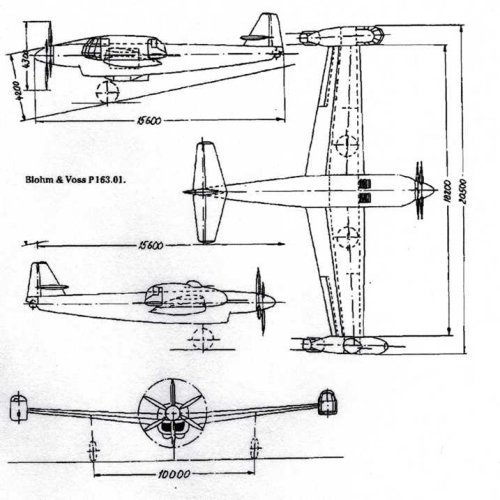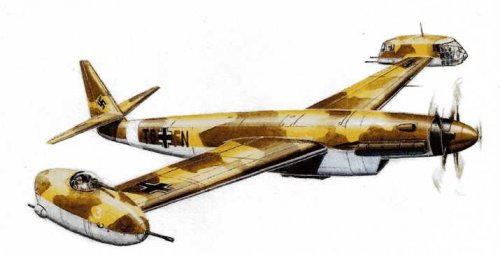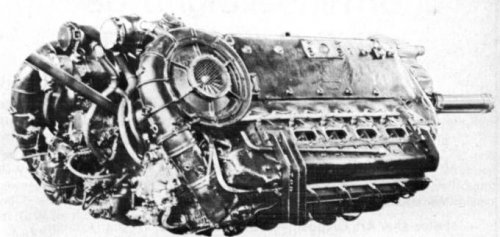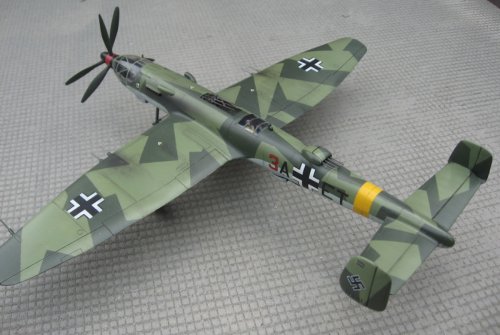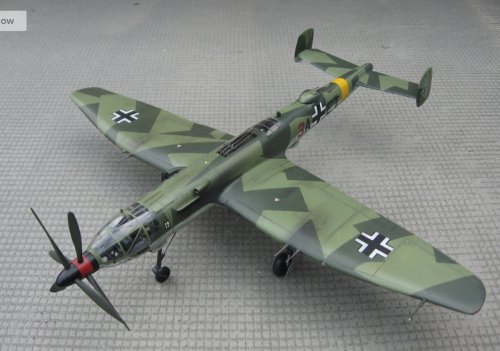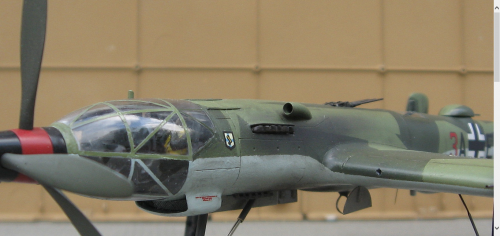http://horseformer.blogspot.jp/2014/03/the-story-of-heinkel-219-uhu-i-owl-in.html
『A private venture by Heinkel, the P.1055, as the prototype was known, was to have been a high speed, high altitude reconnaissance plane, and featured the latest in aviation technology. It had tricycle landing gear, a pressurized cabin, and provisions for compressed air ejection seats which had been developed for the He 280 jet fighter prototype. Other features included a contra-rotating propeller and further engine tweaks, adding a combined supercharger-turbocharger with methanol-water injection for superior high altitude performance, producing an (estimated) 3,500 horsepower. For defense, it was to have twin remote turrets instead of a tail gunner. With great aerodynamics and a heavy bomber engine powering it, P.1055 was projected to have performance like that of a later-era De Havilland Mosquito: a 700 km/h top speed with a 3,500 km range. The war situation was so rosy for Germany at this point initial pitches emphasized that P.1055 would be useful post war as a long range mapping plane, when Germany would own vast chunks of Africa, the mideast, and various other untermenchen lands. A few of these features would show up in the production He 219; specifically the twin tail, the pressurized cabin, and the tricycle landing gear.
The RLM showed some interest in P.1055, but was also non-committal. The main hangup for the RLM was the new technology involved, which would mean that P.1055 would only enter service in 1943, if not later. The RLM by this point had jet engine technology under development, they worried that the new aircraft might be superseded by jet designs by the time it entered service.』
Ummm....... ???
from the same source :
